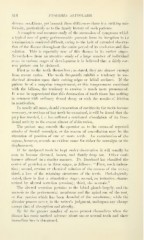Page 518 - My FlipBook
P. 518
516 PYORRHEA ALVEOLARIS.
diverse foiiditions, yet beneath these differenees there is a strikiiiii; uni-
formity, partieuhirly as to the family liistory of such patients.
A eomph'te and accurate study of the succession of symptoms which
a ty])ieal case of g:outy pericementitis presents from its inception to its
termination is rendered difficult, owing to the lack of extended observa-
tion of the disease throuo^hout the entire period of its evolution and dis-
solution. This is especially true of this disease in its earlier stages.
Nevertheless from an attentive study of a large number of individual
cases in various stages of develo^mient it is believed that a fairly cor-
rect picture can be deduced.
First as to the teeth themselves ; as stated, they are almost exempt
from recent caries. The teeth frequently exhibit a tendency to me-
chanical abrasion upon their cutting edges or labial surfaces. If the
patient be of a sanguine temperament, or this temperament combined
with the bilious, the tendency to erosion is much more pronounced.
It must be appreciated that this destruction of tooth tissue has nothing
in common with ordinary dental decay or with the results of friction
in mastication.
In nearly all cases, should excavation of cavities in the teeth become
necessary, or sections of lost teeth be examined, it will be found that the
pulp has receded, i. e. has suffered a continued stimulation of its func-
tional activity to the extent almost of obliteration.
The patient may consult the operator as to the causes of repeated
attacks of dental neuralgia, or the reason of consultation may be the
alteration of position of one or more teeth. An examination of the
organs, however, reveals no evident cause for either the neuralgia or the
displacement.
If the malposed tooth be kept under observation it will usually bo
seen to become elevated, loosen, and finally drop out. Other teeth
become affected in a similar manner. Dr. Burchard has classified the
course of pyorrhea as in three stages, as follows : " First, tooth indura-
tion ; second, erosion or chemical solution of the crowns of the teeth ;
third, a loss of the retaining structures of the teeth. Pathologically
stated, there is first a stimulative stage; second, an irritative, charac-
terized by altered secretion (erosion) ; third, the necrotic."
The altered secretion pertains to the labial glands largely, and the
necrosis to the pericemental membrane and the apical end of the root
or that portion which has been denuded of the membrane ; while the
alveolar process never, in the writer's judgment, undergoes any change
except that of absorption and atrophy.
By far the greater number of cases present themselves when the
disease has made marked advance about one or several teeth and their
immediate loss is threatened.


